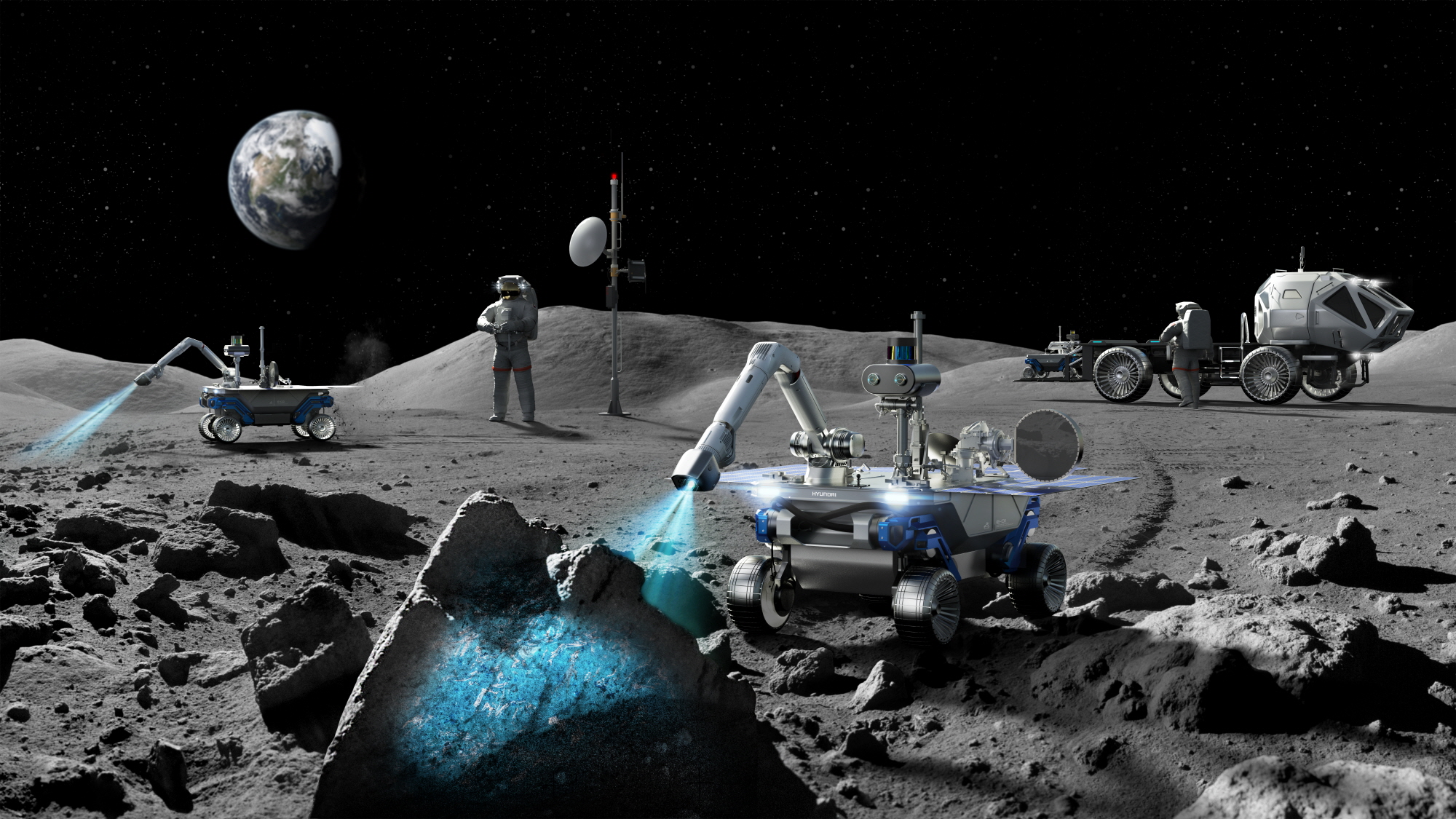
Hyundai Motor Group is finally expanding the realm of mobility beyond land, sea, and air into space.
On the 20th, Hyundai Motor Group announced that it has officially commenced the production of development models for a “lunar exploration rover” in collaboration with top domestic research institutions in the space sector.
This initiative by Hyundai Motor Group aims to contribute to the advancement of scientific research in South Korea by securing technological capabilities in the field of space.
Last July, Hyundai Motor Group signed a multi-party joint research agreement (MOU) with six domestic research institutions in the space sector, including ▲Korea Astronomy and Space Science Institute (KASI) ▲Electronics and Telecommunications Research Institute (ETRI) ▲Korea Institute of Civil Engineering and Building Technology (KICT) ▲Korea Aerospace Research Institute (KARI) ▲Korea Atomic Energy Research Institute (KAERI) ▲Korea Automotive Technology Institute (KATECH).
Subsequently, after extensive discussions with the research institutions, Hyundai Motor Group concretized the direction for the initial model of the lunar exploration rover, aiming for it to land at the lunar south pole and conduct various scientific missions such as mineral extraction and environmental analysis.
Along with the announcement of the rover’s development model, Hyundai Motor Group unveiled an image of the rover’s conceptual design.
The concept of this development model is a small autonomous mobility vehicle specifically designed for lunar surface exploration, featuring a self-charging system powered by solar energy and Hyundai’s cutting-edge autonomous driving technology. Additionally, advanced technologies such as thermal management and radiation shielding devices, as well as metal-driven wheels, are being developed in collaboration with top domestic research institutions to withstand the extreme environment of the Moon, where temperature differences can exceed 300 degrees.
The development model is targeted to have a maximum weight of 70kg and is divided into upper and lower sections. The upper part will primarily perform lunar surface exploration functions, while the lower part will capitalize on Hyundai Motor Group’s innovative technologies.
The lower part of the development model is designed as a platform that can freely move across the lunar surface, allowing for future adaptability as additional or modified upper functions are added.
Hyundai Motor Group expects the development of the lunar exploration rover’s model to be completed as early as the second half of next year. Following this, the group will continue to conduct research on driving and mission execution in environments similar to the lunar surface, continuously upgrading its functions with the goal of presenting a product capable of actual lunar surface exploration by 2027.
A Hyundai Motor Group official stated, “We have consistently expressed our commitment to expand the realm of human mobility experiences to contribute to human progress. We will continue to take bold challenges to realize future visions like ‘metamobility’ introduced at last year’s CES.”
Jin Lee daedusj@autodiary.kr

